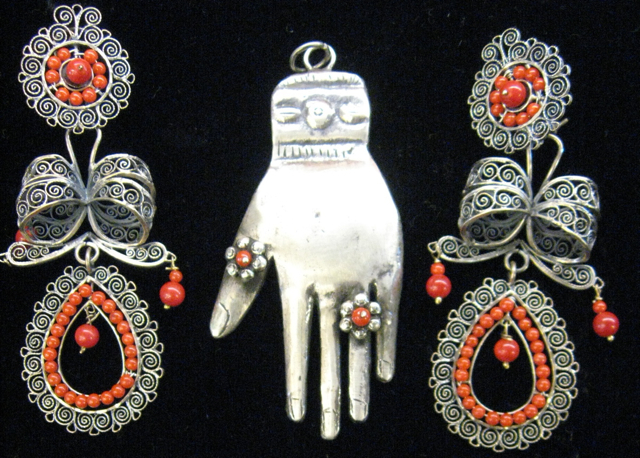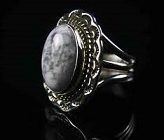Intricate and vivid, Mexican antique silver jewelry unleashes a lot of information about its history, age and value. Ancient jewelry-making involved a wide variety of materials, such as beads, precious stones, copper, silver and gold. Read our guide for more facts and information…
Native American jewelry is renowned for the rich use of beads and metals. Metals were hammered and engraved to fashion with beads. The natives of America were well into the art of jewelry-making even before the arrival of the Europeans. The European influence brought a lot of change in working with silver, as seen in the works of Navajo and Pueblo Indians. The tradition and workmanship of the past centuries are still alive, though the jewelry-making processes have become simpler.
History of Mexican Jewelry
Mexico has a lengthy history of jewelry dating back to the period of the Aztecs and Mayans. Though gold was in use, silver was much popular because of its abundant availability in Mexico’s Taxco. In the time of the Mayans, even ordinary items were crafted from silver. Craftsmen dedicated their lives to the art of jewelry making in order to cater to the needs of the nobility. Aztec men wore decorative ornaments on their lower lips and nose as seen in ancient masks. However, silversmiths emerged in Mexico only after the Spanish introduced the art of making silver jewelry. Taxco de Alarcon, a town in Guerrero, became the center of jewelry-making in the eighteenth century, though the industry was shut down towards the end of the nineteenth century.
The Place of Silver in Mexican Jewelry
Silver is almost synonymous with Mexican jewelry even today. Mexico became famous for its silver resources when the Spanish succeeded in their quest for silver in Taxco. The bold and dramatic Spanish designs are coupled with the vibrant and ornate expressions of native talents to give a unique style to antique Mexican pieces. Though the mining industry lost its luster nearly two hundred years after its historical growth, William Spratling, a United States citizen, brought about a revival in the industry in the 1920s. Though he came to Mexico to study its culture, he recognized the potential of Taxco’s artistic talent. He is considered as the ‘Father of Mexican Silver’ in recognition of his motivational endeavor. The revival created a remarkable development in the jewelry-making industry.
Fame of Authentic Mexican Jewelry
Expensive antique jewelry items of Mexican origin, such as Spratling’s silver are quite famous. Jewelry items were marked after the revival, depicting the uniqueness of Mexican style. For instance, eagle-marked items originated as early as the 1940s. A Spratling sign also serves as a value indicator. The rarity of the piece depends on the marking and it takes a lot of research to find out whether it is an original antique or a re-manufactured piece.
In the pre-colonial era, jewelry was valued for its aesthetics and spiritual symbolism, apart from its role in expressing wealth. Jewelry items of the 1900s are valued highly and the designs of the period are reproduced to depict several patterns like pseudo-Aztec motifs that get a primitive appearance.





